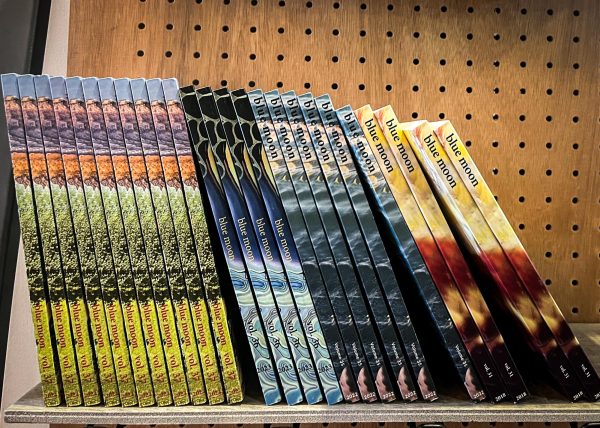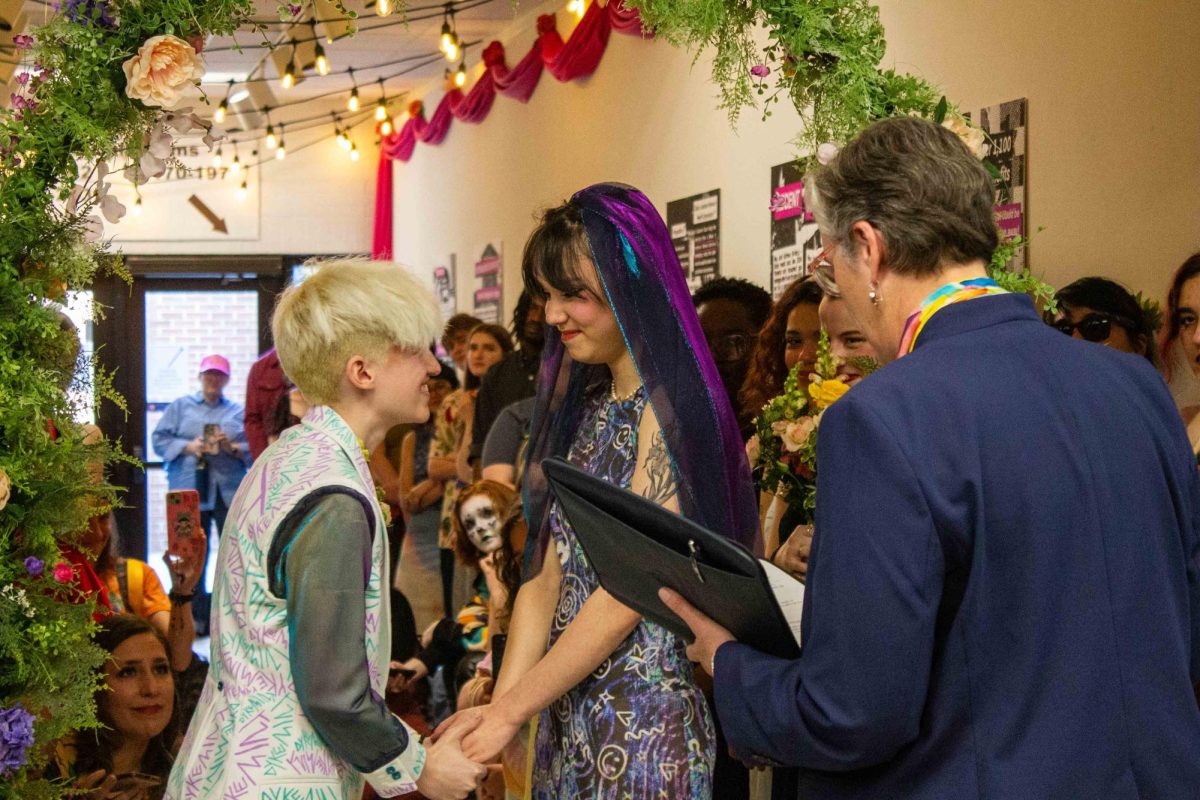
Over the last few years, The Associated Students of Whitman College (ASWC) has decreased the funds for two long-standing student publications, blue moon and quarterlife. Students feel their voices are being deprioritized, while ASWC struggles to justify funding these organizations without the necessary data to measure student engagement with their printed work.
ASWC uses data from an app called Presence to measure how students are engaging with club services and events. This data enables them to determine whether they can give clubs a larger budget. However, clubs like quarterlife and blue moon make this practice more difficult because of their reliance on distributing printed copies, which are given out for free.
Maximilian Walthers ‘25, who was the ASWC finance chair last semester, explains ASWC’s usage of Presence.
“The thing that’s really hard with printing is we try to look at Presence as much as possible,” Walthers said, noting that blue moon and quarterlife did not have much quantitative data expressing their popularity on campus. “This is in part because you can’t track a printed issue. You can’t say ‘Oh can I get your presence?’ every time someone picks up a copy,” Walthers said.
blue moon is an annually published, student-run magazine that has been on Campus since 1924. They celebrated their 100-year anniversary last year. Editor-in-Chief of blue moon, Natalie Price ‘25, explains that the print and production of their magazine require around $14,000.
“Last spring, our budget was cut by about a third. We went from $17,000 to around $12,000, and that was not enough to print our issue for this upcoming year,” Price said.
Price explained to The Wire that blue moon publishes one issue per year and functions as a professional publication. It takes them a year to curate and design their magazine, and they work with their publisher the entire time, going back and forth with edits and revisions. Price says they receive a “box the size of a table,” filled with potential magazine pages, which they go through and sign off on one by one. At the end of the process, they print 700 magazines filled with student work and give them out for free.
Because of the lack of funds, blue moon has had to end a 10-year relationship with their publisher and stop sending out free copies of their magazine to incoming first years.
Price says that blue moon staff usually get the summer off, but due to concerns over lack of budget, blue moon staff had to continue work.
“We had to spend our summer finding a new publisher for our issue. It ended up working out, but we were really worried that it wasn’t going to work out and that this magazine that had been on this campus for years was going to stop existing,” Price said.
quarterlife is a zine that is published four times per year. Each zine has a unique theme, and they have been publishing this way since 2006. Co-editor-in-chief of quarterlife, Megan Wick ‘25, says that quarterlife’s mission is to keep Whitman weird.
“We try to facilitate creative work through the themes that we have and allow students to write things or express things that they might otherwise not be able to,” Wick said. “When I first got here, our budget was probably $13,000 for the entire year, that was 2021. Now our budget is around $4,800, so it has been cut by about two-thirds,” Wick said, “an average issue last year would have cost probably $1,800 to print with the Whitman print shop.” Wick noted this may have been because of the rising number of clubs requesting funding.
Past themes of quarterlife include “Unzipped” and “Skinned Knees.” Wick says the zine used to host large events, noting a quarterlife disco put on a few years ago. They were also able to print with higher-quality material. Old issues of quarterlife feature a flat, book-like spine, which is created through a technique called “perfect binding.” According to zine blog, ExWhyZed, this type of binding allows Zines to print more pages, appear more professional, and it ensures that zines withstand the tests of time. quarterlife can no longer afford perfect binding, so their issues are stapled together.
Walthers said that ASWC budgeting decisions are made by a majority vote within the Finance Committee, which is composed of five students. With the combined influence of high turnover rates within ASWC, and not enough people running for ASWC positions, Walthers said, ASWC decisions will always be reflective of the particular instance in which they are made, and the specific people serving at that time.
He says this makes it hard for clubs to argue that they should receive the same funding they received previously because each new member approaches their work on the Finance Committee differently than their predecessor.
Both blue moon and quarterlife had meetings with ASWC about their budgets. Wick expressed that she felt those on the committee did not understand what quarterlife was when their meeting started.
“We had to present to them why we felt that we were deserving of our budget,” Price said. “They essentially told us that they didn’t think blue moon was a fiscally responsible choice for them to spend money on.”
Walthers described ASWC as a large system with hundreds of thousands of dollars worth of funds and multiple working parts. Students often come to ASWC systems and feel overwhelmed by the ocean of possible reforms and changes.
“blue moon has been around since the 1920s and quarterlife has been around since the mid-2000s. It’s frustrating to feel like we’re trying to hold on to something that has been a legacy for so many people,” Wick said, mentioning that an alumn recently reached out to her. “It was an old editor from 2014 who was like ‘I lost all of my copies of quarterlife.’ So, we found a bunch of her old issues and mailed them to her. As I am about to graduate, it’s kind of sad to think that we might keep getting cut… I hope we survive,” Wick said.
As ASWC continues to adjust its funding priorities, blue moon and quarterlife face financial uncertainty. As ASWC and student organizations continue to navigate these changes, questions remain about how to evaluate the value of printed creative work within the current existing funding models.





